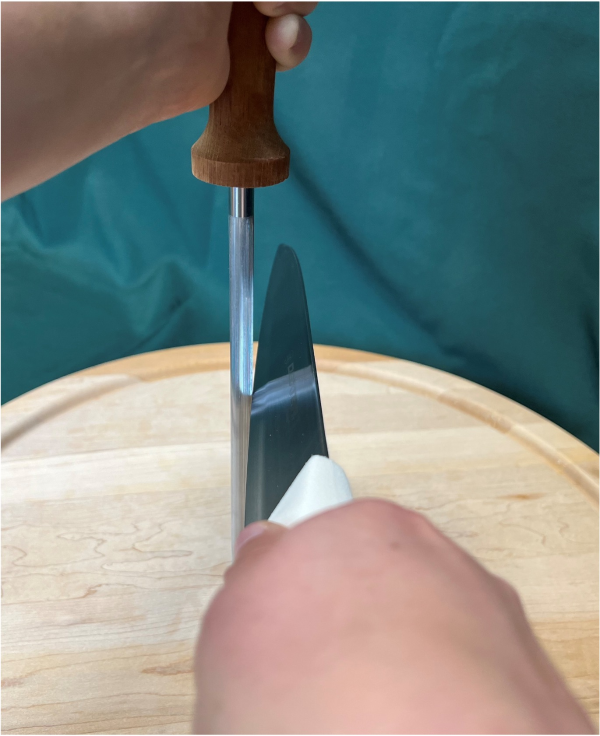
Knife Sharpeners 101
September 5, 2025 - Mary Donaldson
The underlying message in the saying, a good knife is a sharp knife, could also be a reminder that no knife should be without a knife sharpener. But what type of sharpener is best for the job? There are several types, and it really is a preference for the user. Three types of sharpeners are explored, and one tool that is NOT a knife sharpener is explained.
Manual
Manual sharpeners are used with straight-edge knives. This only requires the blade to be drawn through the sharpening slots. If there are multiple stage sharpening slots, use the coarser slot first. With manual sharpeners, you can hear when a knife is getting sharp. The first couple of times the knife blade is drawn through, it will make a grinding sound and will get softer and smoother as the blade becomes sharp. When the knife gets to this point, the finer slot should be used.
Electric
Electric knife sharpeners will do the same job as a manual sharpener. A con with an electric knife sharpener is that it is extremely easy to remove too much of the blade, shortening the lifespan of the knife.
Special sharpeners
There are sharpeners designed to sharpen serrated blades. A round file is used to sharpen each serration and should be done professionally. Ceramic knives cannot be sharpened the same way as steel knives and need to be sharpened with a ceramic or diamond sharpener.
Honing steel
The honing steel is often misinterpreted as a sharpener. The honing steel is to true the blade.
This means the blade is straightened as using the knife over time will cause the blade to become crooked, making it out of alignment. The honing steel forces the knife edge back into alignment, which will make it easier for the blade to slice through things. An example is selecting 2x4s at the lumber yard. If you look down the length of the board, you check to see if there are any curves or bows. That would make it difficult to build something. Having slight curves or bows in the knife blade doesn’t let it perform to its ability.
To hone a knife, draw the blade along the rod at a 22° angle. Using a bit of geometry, start with a 90° angle, half of 90° is 45°, and half of 45° is 22.5°. This step is done after sharpening the knife. Conversely, a knife sharpener does not straighten the blade but only smooths the metal edge until it is sharp. As a sharp knife may stay that way through several uses, the knife may only need honing in between uses.
MSU Extension recommends using a sharp knife to lower the risk of injury. Learning the different parts of the knife, how to hold the knife, which knives can be used for different jobs, and learning about the different types of cutting boards will make working in the kitchen a piece of cake!



 Print
Print Email
Email